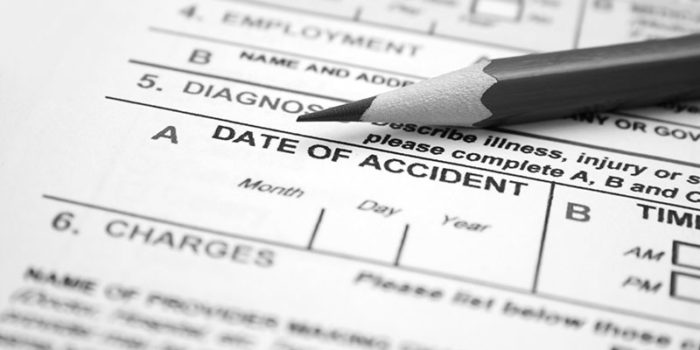Unfortunately, accidents and injuries can still occur in places where you should have the right to feel safe. It is not uncommon for customers to experience a slip and fall injury in public places, such as their local supermarket, which can often lead to more serious back, neck or head injuries.
If you have been involved in a slip and fall, where you have been injured in a public place due to the fault of another party, read on to find out more about the 7 steps to take after a slip and fall injury.

1. Seek medical attention
It is important to seek medical attention as soon as possible after your slip and fall injury and address any injuries. Remember to keep any medical records regarding your injury, such as medical certificates, x-rays and receipts, as these may be required at a later time.
2. Report the accident to the negligent party
Report your injury to the negligent party so they are aware of your injury, and keep any records of communication and correspondence as this may also be required at a later time.
3. Consult a lawyer to determine if you are eligible for a public liability claim
Merely sustaining an injury from a slip and fall in a public place is not sufficient for a public liability claim – it must be shown that the injury was a result of the another person’s negligence. A personal injury lawyer can determine if you are eligible for a public liability claim and your chance of success. In making a claim, you must prove that:
- The party at fault owed you a duty of care.
Whether a duty of care is owed is determined on the facts on a case by case basis. For example, shopping centres owe a duty of care to all customers legally present upon the premises. - The party at fault breached that duty of care.
A breach of duty of care means that the negligent party has not taken reasonable steps to ensure the safety and well-being of those to which they owe a duty of care. The risks posed must be foreseeable and not insignificant. For example, where supermarkets deviate from reasonable practices, such not having floors cleaned from spillage or not having warning signs or barriers placed around potential hazards, this will constitute a breach. - You were injured or suffered loss as a result of this breach.This may pertain to a physical or psychological injury, which can result in unwanted medical costs and loss of income.
Our guide on what you must prove to win a public liability claim explains more.
4. Check the time limits for a public liability claim have not passed
There are strict time limits which apply to public liability claims. There is a 3 year limitation period. This means that all legal action must be made within 3 years from the day the accident occurred. Time limits may be extended for those with special circumstances.
5. Collect evidence
It is important that you collect evidence to substantiate your public liability claim, as this will support your case and help to maximise your compensation payout. Examples of evidence include:
- Photographs of the slip and fall injury itself
- Photographs of the location where the injury occurred, and the surroundings
- A written statement of events
- Names and other contact details of any witnesses
- Receipts or records of any expenses incurred due to your injury, such as the cost of home modification, or travelling expenses
- Records of any lost wages due to your slip and fall injury
6. Lodge a public liability claim
This claim can be brought against the party at fault (even if they are only partially at fault) and their insurance company.
7. Settle the public liability claim and receive compensation
If successful, this settlement will compensate you for your injuries. In cases where the slip and fall injury is minor and a quick recovery is made, a settlement is usually made quickly. In cases where the slip and fall injury is quite substantial and persistent, the claim will often take longer to settle in order to determine the true long-term nature of your injuries and ensure that you receive a fair amount of compensation accordingly.
How much compensation you can receive will depend on your circumstances and is based on the nature and extent of your injuries. Read our full guide here on compensation figures you can receive. You may receive compensation for:
- Medical expenses (both past and in future)
This may include hospital fees, doctors fees, cost of medication etc - Loss of earnings (both past and in future)
This may include time off work, loss of overtime or additional hours, or even a loss of a potential promotion - Care and assistance
Applicable in cases where your slip and fall injury may require you to seek assistance from other people to help with household duties - Home modification
Applicable in cases where your slip and fall injury may require you to make modifications to your home in order to accommodate your injuries (such as installing a ramp) - Pain, suffering and loss of enjoyment of life
For more information about making a personal injury claim, contact Schreuders today.
